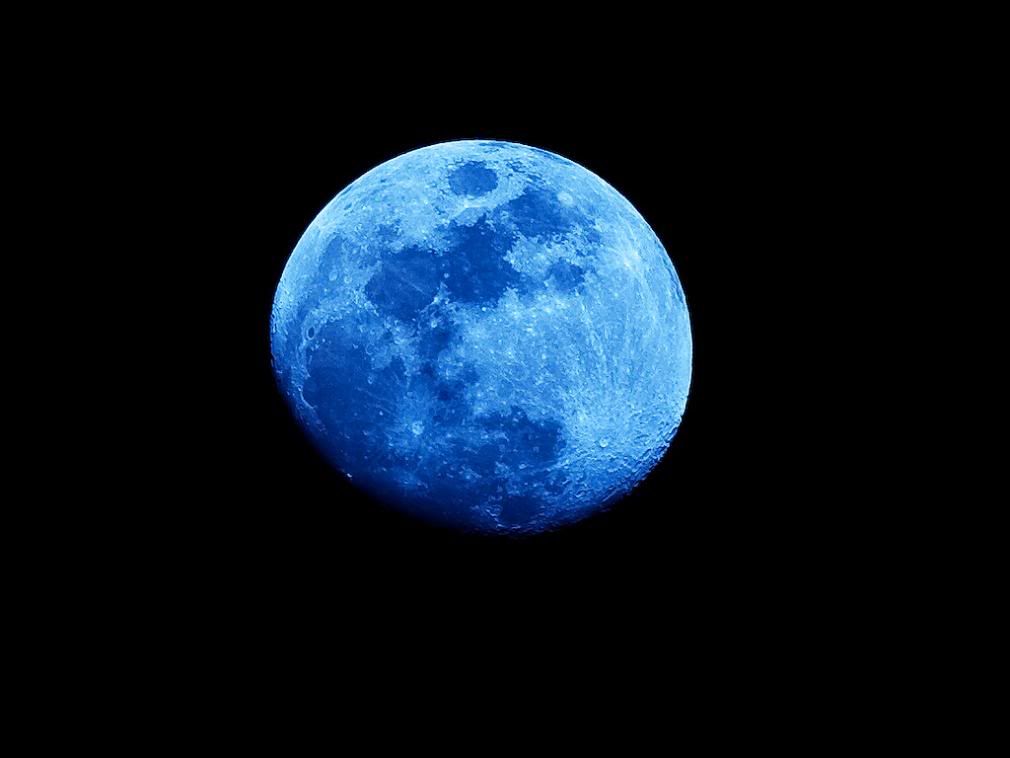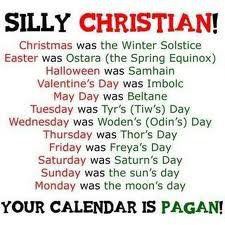A Full Cold Moon on Christmas Night
Last night, while I stood in the wonderful cold darkness, I noticed how the almost full cold moon emitted what I at least perceived to be "bluish light" upon the ground, fences, and houses. Several months ago in the same spot, this light appeared "gold-like." I guess we could at least say that the moon itself can literally appear blue, white, orange, silver, red, etc. at various points of the year, and like magic, often roughly corresponding to the actual seasonal weather.
The word "solstice" is derived from the Latin "sol" (sun) and "sistere" (to stand still).. the "Winter Solstice." This is really more of the moon's time of the year. The moon, mon, ma, the mother, the head of the homestead, the center of the family, the hearth, the fireplace on a cold winter night.
The "offense" of saying ~Merry Christmas~
I don't understand as to how or why anyone could be "offended" by someone saying "Merry Christmas" to them. It would be the Atheist equivalent of, for example" a zealous Christian being offended by a "Pagan" Christmas tree. For me personally, I never liked the idea of a bunch of Ted Turner-like high financiers, who fund groups like the Freedom from Religion Foundation, making sudden demands upon everyone. I'll freely say "Merry Christmas" even though I am not Christan. To worry about such semantics when there are real issued on the table isn't very practical. My "Christmas" is largely Pagan. Actually, there are some Christians, Atheists, Agnostics, or even Satanists, who all appear to have defacto "Pagan values."
 10 Remarkable Origins of
10 Remarkable Origins of Common Christmas Traditions
I'm not going to place the whole article here, since the origin of the Christmas tree and the mistletoe have been covered.
Wreaths
Since classical antiquity, the wreath has been used as a symbol of power and strength. In Rome and Greece, kings and emperors often wore laurel wreathes as crowns – a practice they themselves borrowed from the Etruscans, who predated them. The Greeks and the Romans connected the laurel wreath to their sun god, Apollo, and considered the crown to embody his values.
Harvest wreathes – the predecessors to our modern decorations – were used in rituals for good harvests, and predate even written history. Ancient European animists often used evergreen in their wreathes to symbolize strength and fortitude, as an evergreen will live through even the harshest of winters. As for the connection to Christianity, since wreathes symbolized tenacity and everlasting life, they were often used in funerals of important people, specifically in the burials of saints and martyrs.
Pagans "stole" Christmas from Christians??
Last year, child actor turned faded actor turned semi-famous Christian activist, Kirk Cameron's film 'Saving Christmas' made the claim that the the many Christmas traditions of Pagan origin were actually 100% Christian all along! Even Christian supremacists, like Caryl Matrisciana, understand the Pagan origins of Christmas. Many books, such as 'Pagan Christmas', fully explore this subject. It was clear Papal policy, just as with their Roman predecessors, to co-opt and drown out Pagan holidays and spiritual traditions.
'Kirk Cameron Says Pagans Stole Christmas From Christians'
Someone should really inform the ever-so-earnest Mr. Cameron that Christian co-opting of pagan religious symbols can be found in the Bible itself. In Acts 17:22-24, the Apostle Paul is recorded as addressing an audience in Athens as follows:
"Then Paul stood in front of the Areopagus and said, “Athenians, I see how extremely religious you are in every way. For as I went through the city and looked carefully at the objects of your worship, I found among them an altar with the inscription, :"To an unknown god." What therefore you worship as unknown, this I proclaim to you.' "
-- Mark Kessinger
Kirk Cameron: Don’t drink the pagan ‘Kool-Aid’ about Christmas, historians ‘don’t know this stuff’
People have been becoming more informed about the pagan origin of Christmas and other holidays for years. It is interesting that he would choose to come out with a movie mocking intelligence and real information for the sake of what he really WANTS to believe whether it is true or not. Shame on him.
-- Frank
Krampus - The "devil" of this Christmas season
Krampus
In Austro-Bavarian Alpine folklore, Krampus is a horned, anthropomorphic figure who, during the Christmas season, punishes children who have misbehaved, in contrast with Saint Nicholas, who rewards the well-behaved with gifts. Regions in Austria feature similar figures and, more widely, Krampus is one of a number of Companions of Saint Nicholas in regions of Europe. The origin of the figure is unclear; some folklorists and anthropologists have postulated a pre-Christian origin for the figure (see Germanic paganism).
In traditional parades and in such events as the Krampuslauf (English: Krampus run), young men dressed as Krampus participate; such events occur annually in most Alpine towns. Krampus is featured on holiday greeting cards called Krampuskarten.
The recent movie 'Krampus' brought back to life this semi-evil entity of pre-Christian Alpine-German folklore. In Pagan traditions, the concepts of good and evil weren't two sides at war with each other. Often they were thought of as two related expressions, two sides of the same coin. The good and bad in all of us was accepted.
What many Christians don't seem to comprehend, is that when you attempt to completely stamp something out... what you often get is just more of it. "Sex" is a good example of that. When suppressed, it then becomes empowered. It's just like with words; they only have the power given to them. Intrinsically, they have zero power.
.






No comments:
Post a Comment